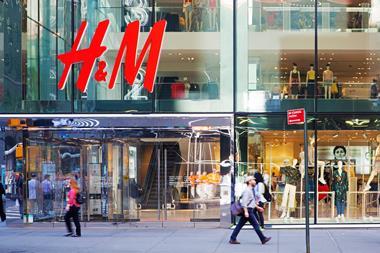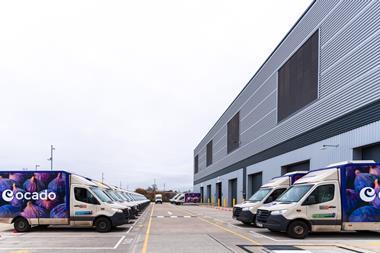AI is making waves in the retail industry – but it is not without its challenges. Retail Week examines how retailers are overcoming the difficulties associated with adopting new technologies.

Trusting the data
As part of its digital transformation journey, fashion retail group N Brown turned to AI in 2019 to streamline its back-end processes and offer more personalised user experiences to customers. It integrated an AI-driven size-and-fit solution in 2020, with continued investment in the tech to date.
Having been part of the retailer’s journey, Vlad Jiman, director of data at N Brown, says: “Navigating the AI landscape requires both pragmatism and empathy.”
One of the most common issues for both staff teams and consumer markets is trust: outputs can be mistrusted if the inner workings of the technology can’t be seen.
Jiman says there are two important keys to building trust, with data integrity being priority number one.
“Navigating the AI landscape requires both pragmatism and empathy”
“First and foremost, data integrity is paramount,” he says. “Retailers must regularly curate and cleanse their datasets to ensure that the information feeding into AI systems is accurate and relevant.
“Garbage in will always result in garbage out.”
He adds that monitoring will involve data validation, handling missing data and identifying outliers or anomalies. Comprehensive data audits can also help ensure that data used for training and testing AI models is of the highest quality.
Meanwhile, Gareth Mitchell-Jones, digital solutions director at PwC, says data quality is a challenge for lots of retailers. “The big thing is that the data isn’t necessarily in the state that it needs to be, and a lot of work needs to be done to prepare data for repeatable data processes that rely on good-quality data.
“And that is a challenge for every retailer I speak to. Understanding the attributes of a product, where it’s located, how many there are – these are traditional problems that haven’t been solved, and [retailers are] still struggling with them after 30 years.”
The human touch
The second key to building trust, says Jiman, is that retailers should always incorporate human oversight.
“This can be achieved through a system of checks and balances where AI-generated insights are periodically reviewed by human experts for validity,” he says.
“This dual approach combines the computational power of AI with the nuanced understanding and contextual knowledge of humans.”
For Matt Moorut, director-analyst for Gartner for Marketers, this will mean retailers running AI models alongside traditional insight-generation processes until the AI is producing better insights than could otherwise be made.
This iterative process, involving humans, will help build trust in AI projects as they grow.
Shiny objects
One big question for retailers is where to invest. AI is impacting every part of the value chain and has the potential to improve operational efficiencies and customer engagement across the board.
So where should retailers set their priorities?
The answers differ significantly according to the business. For example, the likes of the Co-op are rolling out AI-powered robot deliveries, using a mixture of cameras, GPS and sensor fusion to navigate.
Meanwhile, brands such as L’Oréal, are using AI to launch virtual try-on services to help customers make decisions when shopping online.
Do customers actually want these services? And how can retailers determine where to put their resources?
Beauty retailer Space NK brought these questions (above) to the fore when developing its store strategies. The retailer, which largely targets affluent shoppers with its premium range of beauty and wellbeing products, is limiting the impact of AI in stores, based on customer feedback on its current successful model.
The business saw its revenues rise to “record-breaking” levels in the year ending March 2022 with sales of £119m, up 6.5% on the previous year.
Speaking to Retail Week in May 2023, Space NK chief executive Andy Lightfoot emphasised the importance of understanding customer wants and needs when creating engaging retail spaces.
“‘Experiential retail’ is one of these overused terms that could be engineered to mean absolutely anything,” he says.
“For me, the experience that customers want when they go to a beauty retailer is to be able to touch the product, use it, play with it, feel it, smell it and have a really positive interaction with a member of staff should they wish.
“So you won’t see loads of screens in our stores. You won’t see loads of artificial reality experiences. We know that isn’t why our customers go into stores; they can do that on their phones.”
Think ‘customer’
Following a £100m AI tie-up with Google, announced in August 2023, John Lewis Partnership (JLP) considered the potential of AI-driven, Just Walk Out-style checkouts – like those in Amazon Fresh stores – at Waitrose. It also looked at how innovating this part of the shopping experience may not be right for the brand and its customers.
JLP chief transformation and technology officer Zak Mian said: “The jury’s out as to whether customers want assisted service in a grocery shop or for it to be fully automated. A lot of our customers like our service of the fish, meat and cheese counter at the back of the shop – that makes a difference.”
“While AI is interesting and it’s sexy, are you really going to increase sales because of it? Are customers only going to order from drone delivery companies? We don’t care how the package gets to us”
Brendan Witcher, vice president and principal analyst at research firm Forrester, says the key to making AI applications a success is to ask whether they solve an actual problem for customers.
AI-powered drone deliveries, for example – being trialled by Tesco in the UK, Walmart in the US and Coles in Australia – is one interesting idea to support customer convenience.
However, Witcher adds: “I don’t know a single customer who stands at their front door and says: ‘That package better come by drone or I’m never ordering from them again.’ You don’t really need it – that’s the shiny object problem.
“So, while AI is interesting and it’s sexy, are you really going to increase sales because of it? Are customers only going to order from drone delivery companies? We don’t care how the package gets to us.”
By contrast, virtual try-on services such as Zalando’s could help tackle a real problem customers face when shopping online: knowing what something will look like on them.
“This elevates the customer’s confidence in buying; AI is going to be most impactful when it removes pain points from the customer experience,” says Witcher.
The goal needs to be prioritising technologies that either reduce costs or increase revenue, he says. The environmental and cost implications of returns cannot be ignored here – increasingly accurate virtual try-on solutions help reduce another headache for retailers.

For further insights and analysis, read the full report, Beyond the Hype: How AI in UK retail has moved to the mainstream.


























No comments yet